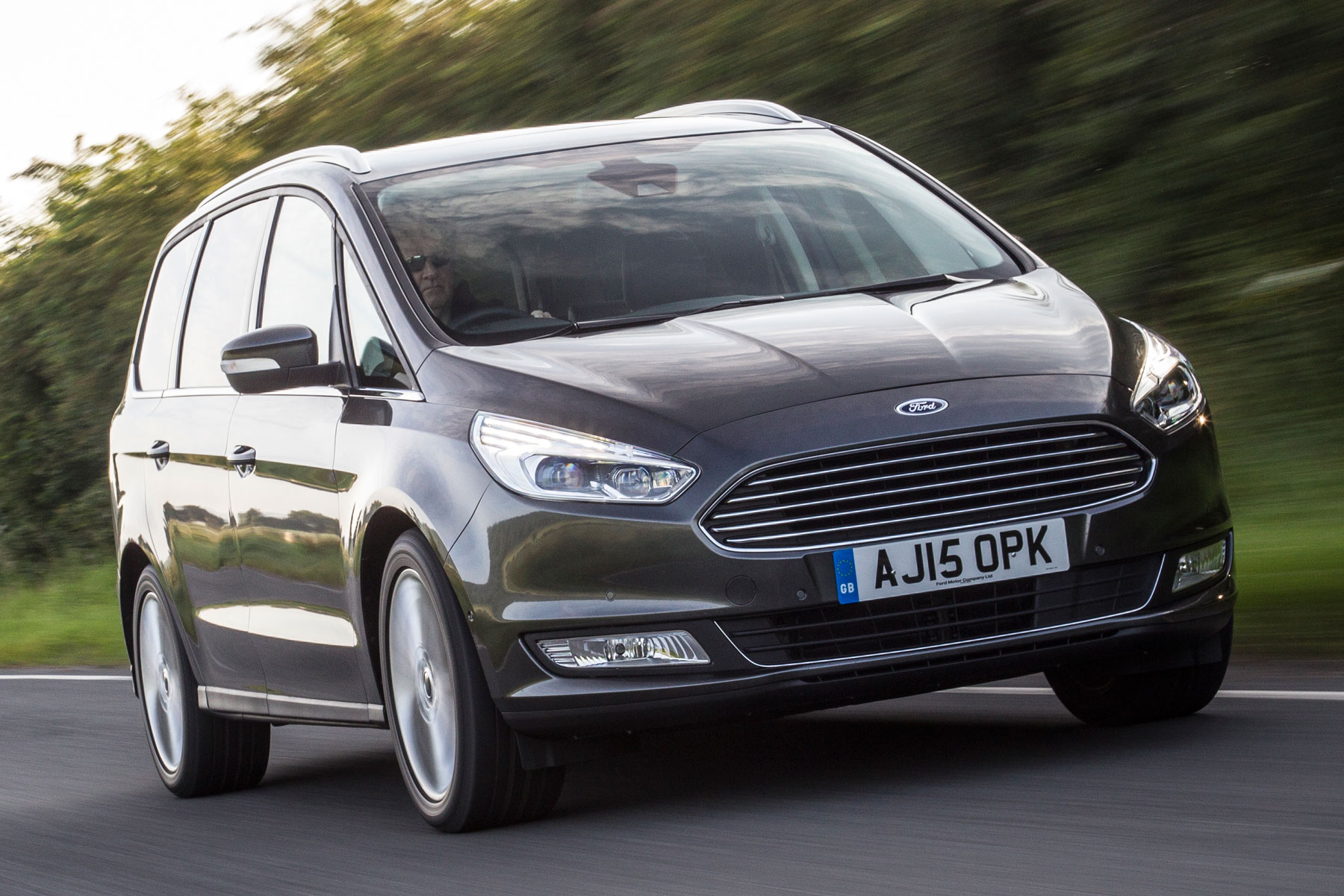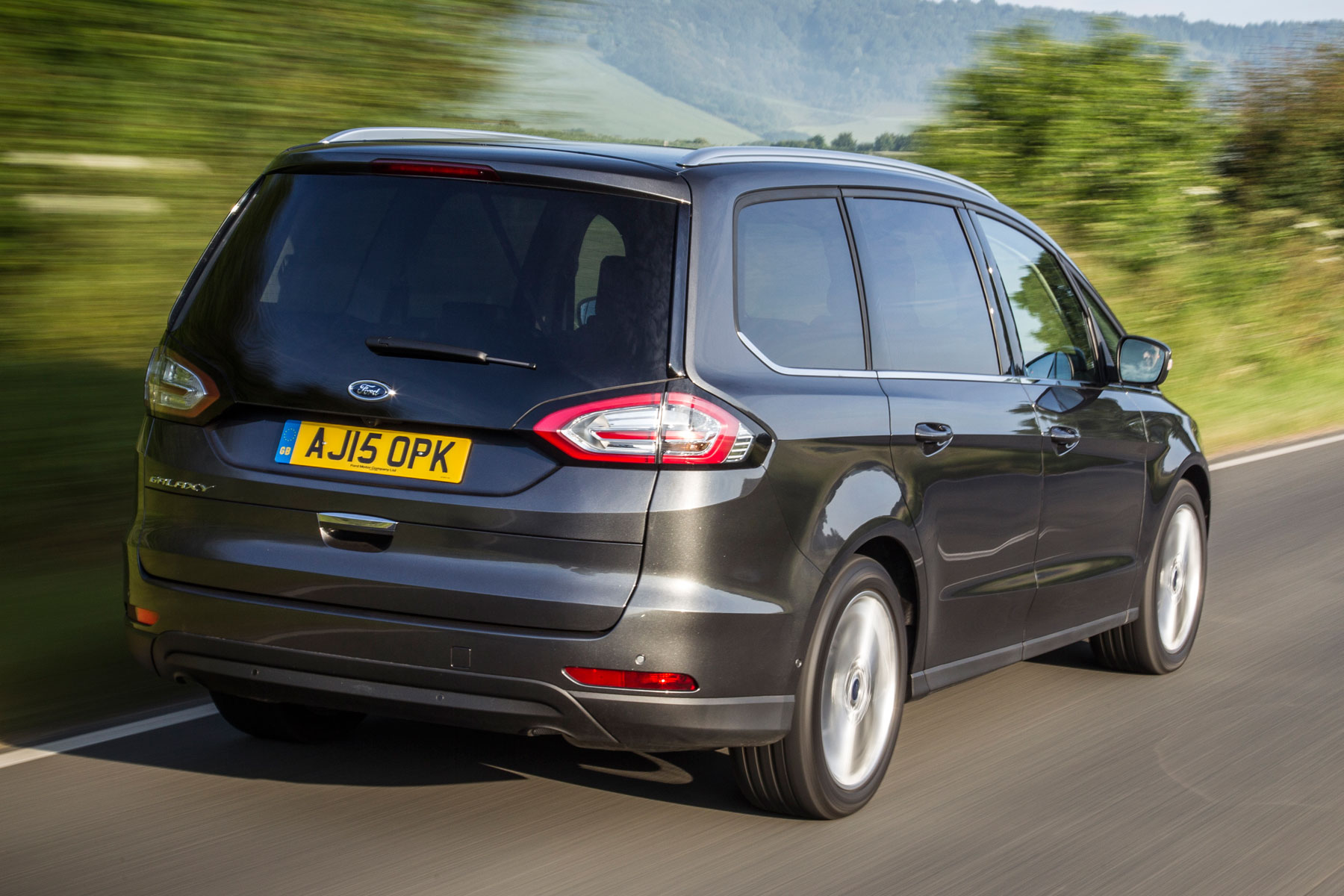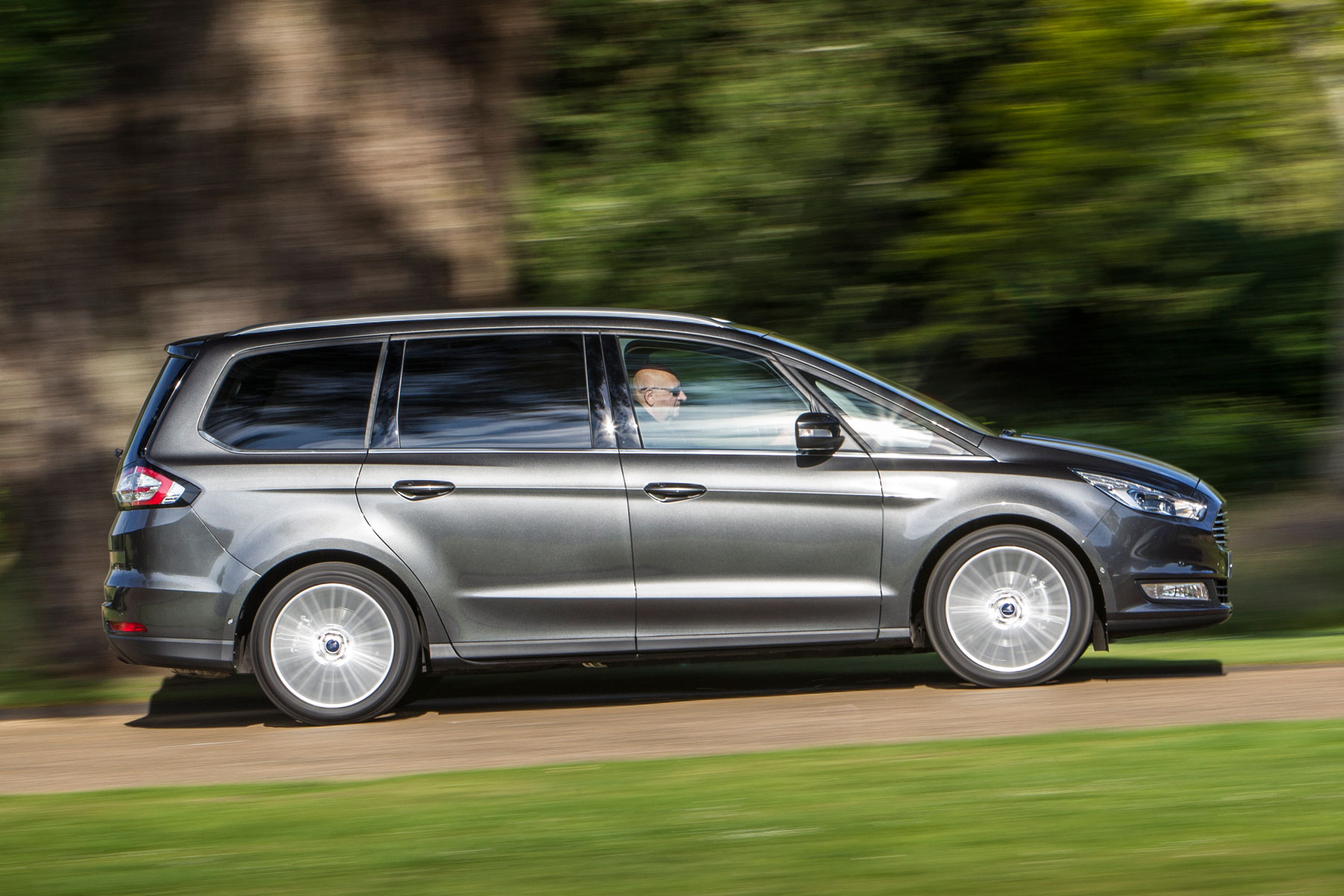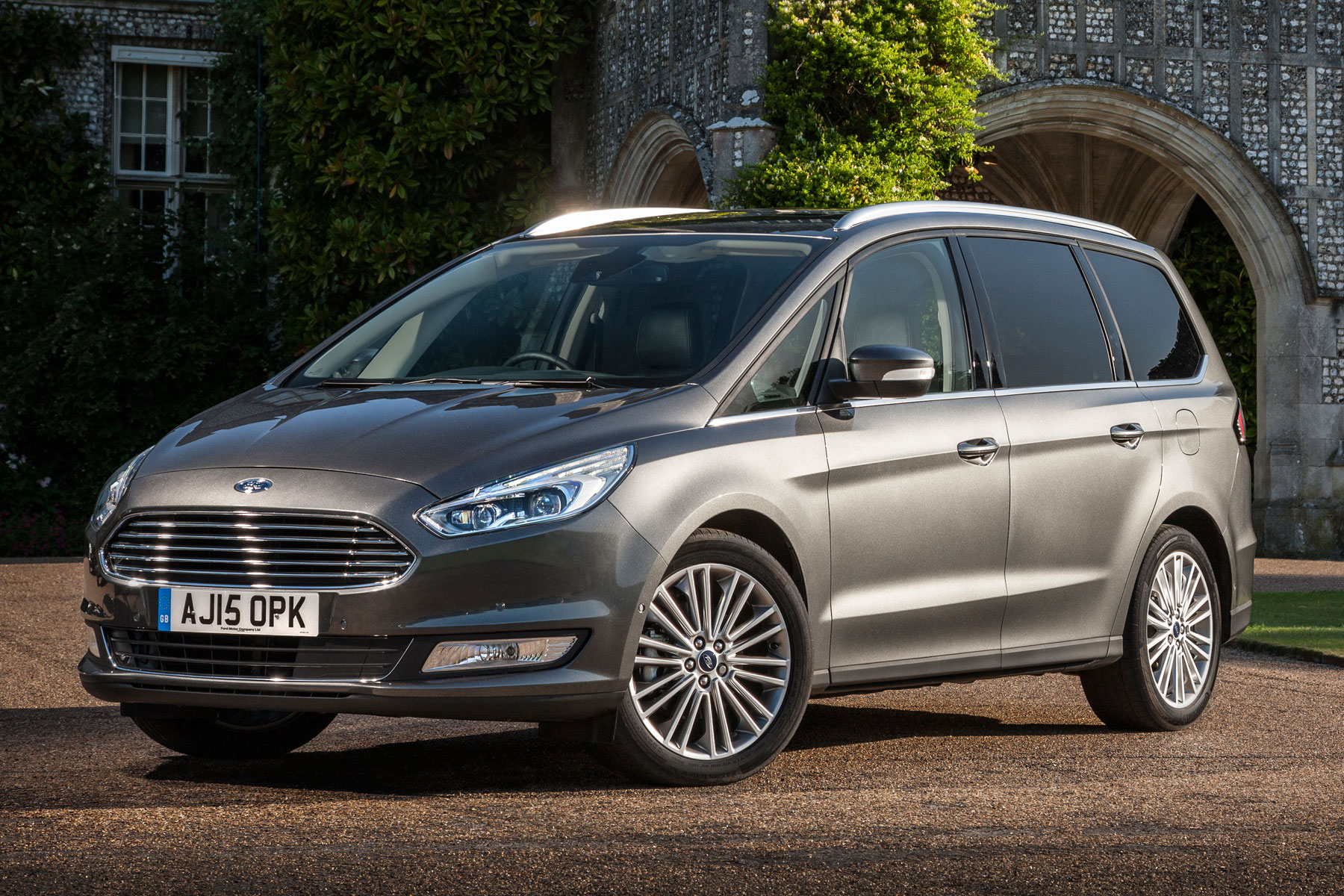MPVs have never been vehicles that are bought because somebody wants one. It’s more that they need one, and those needs are now met in much more attractive packages. Essentially, those with four-wheel drive and premium badges.
One MPV that has managed to shake off the drab image is the Ford S-Max. Launched in 2006 and replaced this year, it proved that people carriers could be fun. Combine an enjoyable driving experience with attractive looks, clever sliding seats and a decent amount of kit, and Ford was on to a winner.
The Galaxy has always been a bit more of an old-school people carrier. Very ‘1990s’ (despite the third-generation model launching at the same time as the S-Max in 2006) it provided plenty of space for a sensible amount of money, but not a lot more. As a result, Ford sold 6,250 of its Galaxy last year. When you compare that to the huge numbers full-size SUVs sell in, it’s a relatively small deal – yet it accounts for more than half of the MPV segment.
So what has Ford done to make its Galaxy more desirable? On the outside, not a lot. It still looks very similar to its predecessor – simply dragged into 2015. It now boasts Ford’s signature trapezoidal grille, as seen across the range, and its slimline headlights look modern.
But to make the Galaxy more desirable to private buyers (yes, people other than Addison Lee do want these people carriers, apparently), it’s moving upmarket with extra technology and a more luxurious interior.
2015 Ford Galaxy: on the road
If you’ve not driven an MPV before, the Ford Galaxy is a big car. When negotiating tight car parks you’ll be very aware of that – but good visibility helps, and tech such as Ford’s active parking system is genuinely useful rather than simply gimmicky.
The new Galaxy shares the same platform as the S-Max, and out on the open roads you can tell. It shrinks around you and is easy to place on country roads, meaning driving a big seven-seater isn’t as daunting as it could be.
It’s also, dare we say it, a rather fun steer. It does that typically Ford thing of being much more fun to hustle along than it has any right to be. The steering is nicely heavy (but not overly so), while the 180hp 2.0-litre TDCi diesel engine we tried provided plenty of power to make progress in a relaxed manner.
For those who require their Galaxy to be extra grippy, it’ll be available with four-wheel drive for the first time since the 1995 original. We didn’t get the opportunity to try the Intelligent AWD version, but Ford says it can shift 100% of the engine’s torque to the front or rear wheels depending on where it’s needed. By doing this, it has minimal effect on fuel consumption as, under normal driving, it’s essentially front-wheel drive.
Just under half of buyers are expected to specify the Powershift automatic gearbox, which we think is well suited to the character of the car. For those watching the pennies, however, the manual gearbox is similar to that you’ll find across the Ford range – with a slick change that’ll be recognisable to anyone used to driving one of the smaller models.
On the motorway, the Galaxy is very refined – but there is a little wind noise at high speeds. There’s no getting away from the Galaxy’s boxy dimensions when you’re cruising along the M6 at 70mph.
Bumps are well absorbed, however, with the Galaxy’s new integral-link rear suspension doing a good job of preventing travel sickness (also aided by the excellent visibility and airy interior).
2015 Ford Galaxy: on the inside
Despite looking similar to its predecessor on the outside, the new Ford Galaxy is longer than the old model. Naturally, that equates to more space inside, although if you do use all seven seats you will find boot space is limited.
Otherwise, the Galaxy is a brilliantly practical car. The rear seats fold down entirely flat at the touch of a button, and the rearmost seats can even be raised electronically. A cool trick, perhaps, but it seems a little pointless if you have to raise the middle seats manually.
It’s a car designed with families in mind, however. There’s storage available everywhere – from under the seats to the huge 1.5-litre bottle holders.
Fold down all but the two front seats and you’ve essentially got a capable van – with an entirely flat floor, easy access from the boot opening and a considerable 2,339 litres of luggage space.
One gripe we have with the interior is the 8-inch high-res touchscreen. In the Titanium X specification of our test car, with its panoramic sunroof, light bounces off the awkwardly-angled screen – making it hard to follow the sat nav.
And, rather than the traditional instrument cluster, our car was fitted with the 10-inch digital screen including an animated speedometer. A bit of a fad, in our opinion, especially as the needle is several millimetres thick, making it hard to tell exactly what speed you’re driving at.
2015 Ford Galaxy: running costs
Ford says that 30% of its outgoing Galaxy sales were to daily rental companies, meaning the market was flooded by well-used examples a few years down the line.
But as it moves the Galaxy upmarket, it says none will make it onto hire fleets. What difference will that make to you as a private buyer? According to experts CAP, your Galaxy will be worth an extra £1,950 three years down the line.
That goes someway towards justifying the small increase in price over its predecessor, with prices starting at £26,445 for the entry-level Zetec – the model around half of buyers are expected to opt for.
Running costs are astounding for the size of the car. It’s available with Ford’s new 210hp 2.0-litre bi-turbo TDCi engine, as seen in the Mondeo. This provides an official fuel consumption figure of 51.4mpg and emits 144g/km CO2 – a considerable 24% improvement over the outgoing 200hp 2.2-litre TDCi.
For those who don’t need as much power, the 2.0-litre TDCi is available in 120, 150 and 180hp forms – boasting 56.5mpg and 129g/km CO2. Not quite as good as the Citroen Grand C4 Picasso, but impressive nonetheless.
A handful will be sold with the 1.5-litre petrol Ecoboost engine, delivering 43.5mpg and 149g/km CO2 in 160hp form.
2015 Ford Galaxy: verdict
Put aside your prejudices against MPVs and the new Ford Galaxy is a thoroughly good car. It’s full of clever touches that’ll make family life easier, and it does feel more premium than its predecessor.
It’s massively practical without being intimidating to drive – indeed, you may even enjoy yourself behind the wheel. Perhaps not as much as in the smaller S-Max, but if practicality comes first the Galaxy should be high up in your considerations.
The numbers add up too, but we’d stay away from the higher-end versions. The Zetec makes the most sense to us, as by the time you’ve spent over £33,000 on a Titanium X model the practical people carrier doesn’t look quite as good value.
Specification: 2015 Ford Galaxy
Engines: 1.5-litre Ecoboost petrol, 2.0-litre TDCI diesel
Prices from: £26,445
Power: 120hp – 240hp
Torque: 177 – 295lb ft
0-62mph: 8.6 – 13.6 seconds
Top speed: 138mph
Fuel economy: 35.7 – 56.5mpg
CO2 emissions: 129 – 180g/km




